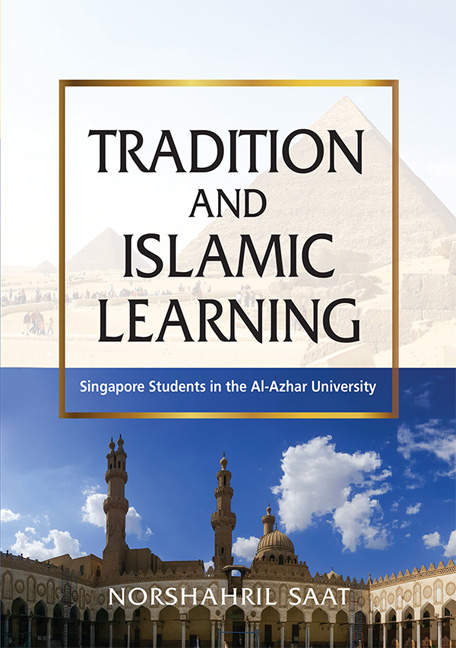Book contents
- Frontmatter
- Dedication
- Contents
- Preface
- Acknowledgements
- Abbreviations
- A Note on Translation, Spelling and Other Conventions
- Chapter 1 Introduction: Islamic Education and Religious Authority
- Chapter 2 The Al-Azhar University: A Historical Sketch
- Chapter 3 Prominent Southeast Asian Al-Azhar Graduates
- Chapter 4 Al-Azhar Today: The Experience of Singapore Students
- Chapter 5 Conclusion
- Bibliography
- Index
- About the Author
Chapter 2 - The Al-Azhar University: A Historical Sketch
Published online by Cambridge University Press: 04 July 2018
- Frontmatter
- Dedication
- Contents
- Preface
- Acknowledgements
- Abbreviations
- A Note on Translation, Spelling and Other Conventions
- Chapter 1 Introduction: Islamic Education and Religious Authority
- Chapter 2 The Al-Azhar University: A Historical Sketch
- Chapter 3 Prominent Southeast Asian Al-Azhar Graduates
- Chapter 4 Al-Azhar Today: The Experience of Singapore Students
- Chapter 5 Conclusion
- Bibliography
- Index
- About the Author
Summary
The Al-Azhar University has significantly impacted Islamic education around the world. The university has been referred to as Qiblatul ‘ilm (The Centre of Knowledge) because it offers a wide range of Islamic studies disciplines besides the study of the Quran and Hadith. The university offers an-nahwu was sorf (Arabic syntax and morphology), Arabic language, mantiq (logic), aqidah (belief), fiqh (jurisprudence), and tassawuf (Sufism). Many Islamic universities or Islamic departments emulate Al-Azhar's curriculum. For example, the Faculty of Shariah of the University of Damascus in Syria follows the teaching methods of the Al-Azhar University. Similarly, universities in Sudan have their Islamic curriculum modelled after the Al-Azhar University. Graduates from Al-Azhar have also been invited to teach in Malaysian universities, particularly in the Islamic departments. These academics also helped kick-start these departments during their formative years (in the 1970s) in order to improve students’ Arabic standards (Abaza 1994, p. 70). Many of the teachers lecturing at the Akademi Islam — today known as Islamic Studies Academy (Akademi Pengajian Islam, or API) — of the University of Malaya are Al-Azhar graduates. Graduates from the Al-Azhar University have headed the Faculties of Shariah (Islamic Law) and Usuluddin (theology) in Malaysian universities.
HISTORY OF AL-AZHAR
The formation of the Al-Azhar University dated back to more than 1,000 years ago. It was formed during the Fatimid Caliphate (909– 1171), a Shia-leaning government, in 972. The Fatimid Caliphate upheld the Shiite Ismailiyya school of thought. The rulers claimed to be descendants of Prophet Muhammad's daughter, Fatimah. Interestingly, even though the rulers were Shias, Egypt was (and still is) a Sunni-majority country. When the Fatimids conquered Egypt, they did not oppress the Sunnis, and they were allowed to practise their beliefs freely (Dodge 1961, p. 10). Under the Fatimids, Jews, and Copts were also allowed to practise their faith without any oppression (Tignor 2010, p. 154). Al-Azhar was first constructed by a Fatimid general to serve as an “assembly mosque” for the masses. Al-Azhar was also a means to glorify the Caliphate, projecting its power and authority to its rival, mainly the Caliphs in Baghdad (modern-day Iraq) (Dodge 1961, pp. 1–2).
- Type
- Chapter
- Information
- Tradition and Islamic LearningSingapore Students in the Al-Azhar University, pp. 15 - 33Publisher: ISEAS–Yusof Ishak InstitutePrint publication year: 2018

